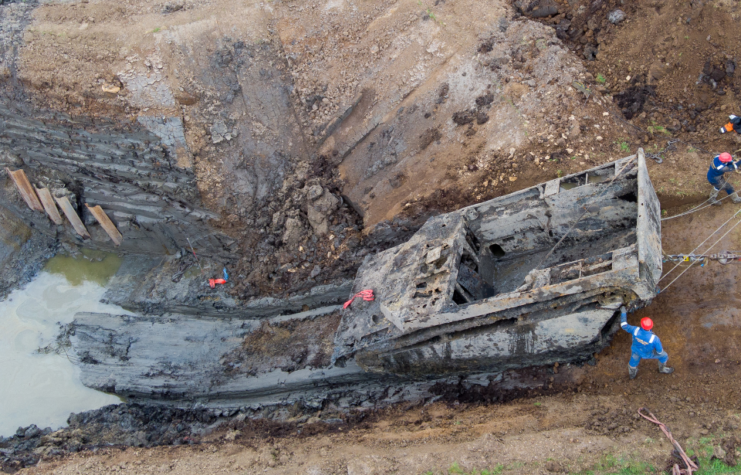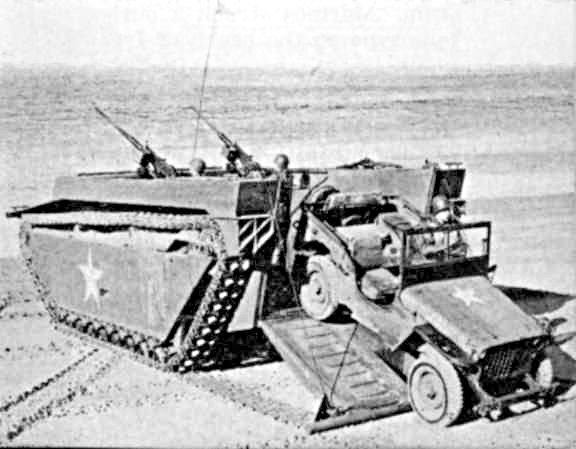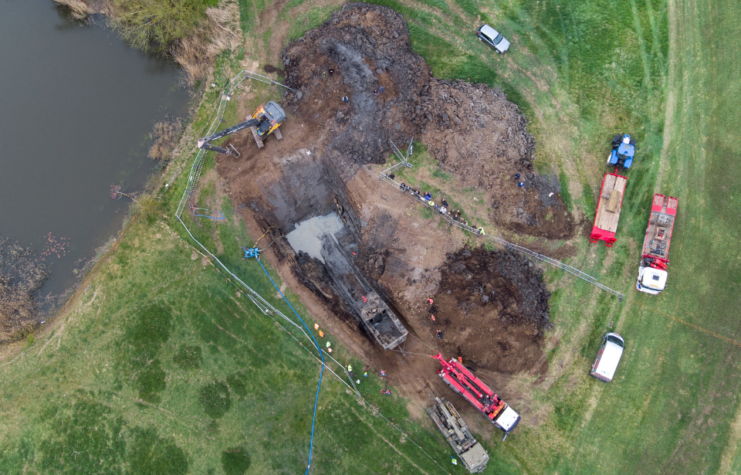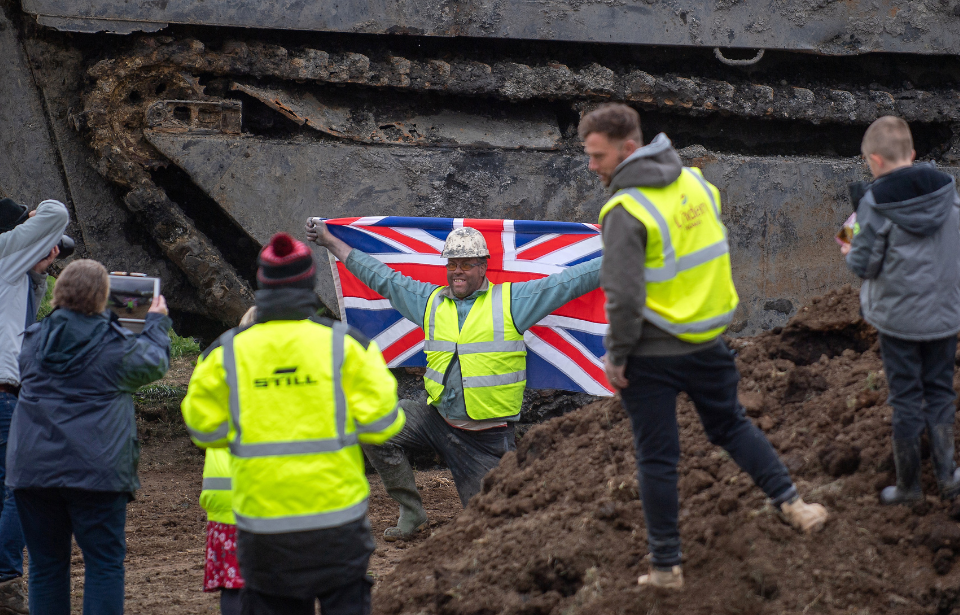A WWII armored vehicle has been uncovered near Peterborough, Cambridgeshire, after spending 74 years buried underground. The vehicle is a WWII LVT-4 Buffalo, also known as an “amtrac.”
Daniel Abbott has been searching for the missing vehicle for three years and is happy to have finally found and uncovered it. “I’m over the moon with what we’ve achieved — it’s very exciting. We’ve spent five days digging and we’re nearly there,” he said. “We’ve had to do a lot of digging by hand, as well as using a machine from the North Level Drainage Board.”

Lost in bad weather
The Buffalo was lost in 1947 while being used to contain major flooding in the area that same year. The nearby River Welland burst its banks after a heavy snowfall, sudden thaw, and heavy rain, resulting in the flooding of 30,000 acres of land. There was a worrying risk that if the flood wasn’t contained, it would easily destroy crops in the surrounding area, which is very flat.
The military was brought in to help, and they provided about 16 Buffalos that were to used to quite literally plug the gap in the River Welland’s banks, while efforts were made to pump away the floodwater.
As part of the makeshift dam, five of the Buffalos were washed away by the flow of the water. Only one of these was recovered, while another two fell into fishing pits. The last two sunk deep into the ground where they were lost until now.
The LVT
The LVT Buffalo was an amphibious vehicle used to great effect throughout WWII. It began its life in the 1930s as the Alligator, designed by engineer and inventor Donald Roebling as a civilian search and rescue vehicle for swampy terrain that conventional boats and land vehicles couldn’t pass. He was approached by the U.S. military after they had caught wind of the design, and they were interested in developing it further for their own uses.

To begin with, Roebling didn’t want the military to use his design, as he had intended it for peaceful missions, but he was convinced after the war in Europe began. The military suggested some changes to adapt it to their needs and improve its seaworthiness. They entered production in 1941 as the LVT (Landing Vehicle Tracked).
The LVT could carry troops or equipment in its cargo bay from a ship, across the water, and directly onto a beach, where it could still operate on land. It was powered by a 250 horsepower Continental W670 radial engine that gave it a top speed of 25 mph on land and 6.8 mph in water. The military originally only wanted to use it as a cargo transport, but over the course of the war, the design evolved to accommodate increasingly combative roles.
Over 18,000 were built in total, with the LVT-4 Buffalo by far the most numerous, the same type that has been recovered in Cambridgeshire. The LVT-4 was arguably the definitive variant. This version moved the engine forward and placed a ramp at that back that opens and closes to allow troops to embark and disembark. Previously, troops would have to climb over the sides of the vehicle.
Recovering the vehicle
It took the team 10 days to remove the Buffalo, which has rested under 30 feet of clay and peat for over 70 years. The vehicle is in remarkable condition, most likely preserved by the low oxygen and highly acidic environment created by the peat. The vehicles that were used to contain the River Welland flooding were used to cross the River Rhine in 1945.

“We can’t get over and express how well this machine has kept within the clay and the peat and it has survived all these years to give us the best example we have here,” Abbott said. “I’ve always wanted to get one of the tanks out before the 75th anniversary of the floods and we started planning this a couple of years ago.”
“We found the gun mount first and it’s in fantastic condition for its age.
“The tank seems to have been well preserved in the clay. Once we’ve winched it out we will assess it, then hopefully we will eventually be able to put it in a nice shed in the town and make a museum.
More from us: American B-17 Wreckage Is At Risk In England’s Sandwich Bay
“It’s been in Crowland for 74 years and it’s part of the town’s history.”
The preservation of the Buffalo is so good that its rear door still works, and has prompted the idea of a potential full restoration.
